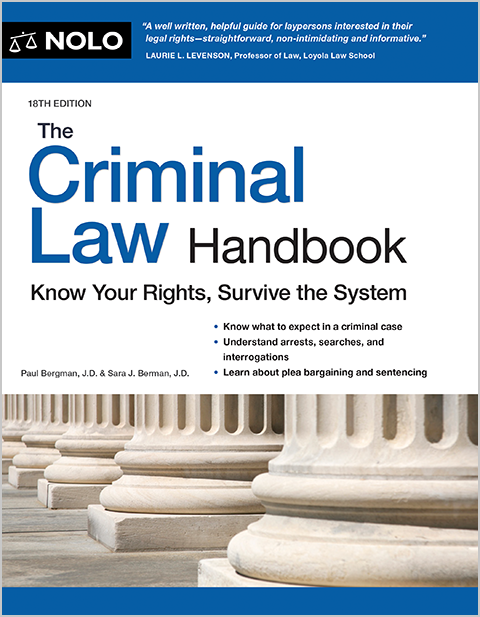Learn how to understand an ALJ's decision denying your Social Security disability benefits—and what options you have to fight the denial.
After waiting for months or even years to have your disability hearing, getting an unfavorable decision from the administrative law judge (ALJ) assigned to your claim can feel like a slap in the face. Even more frustrating is the fact that many claimants struggle to understand the judge's reasoning behind the denial of benefits, which usually contain special language and legal jargon that can be difficult to decipher.
If you received an unfavorable decision, the administrative law judge didn't find that you're disabled and won't be awarding you Social Security benefits. But keep in mind that ALJs need to write their decisions in a way that is "legally sufficient," meaning that they have to do it in a certain way or risk having their decisions overturned. You can use this to your advantage by reading your unfavorable decision and looking for "legal insufficiencies" that may support your disability claim should you choose to appeal.
What Does "Notice of Decision - Unfavorable" Mean?
An unfavorable decision means that the administrative law judge who held your hearing doesn't think that you've met Social Security's definition of disability at any point during the time period your application covers. The ALJ is required to explain why you're not disabled in a written opinion. All unfavorable opinions follow the same pattern—an introduction that identifies you by name, your Social Security number, and what type of disability benefit (SSDI or SSI) your claim is for. The introduction is followed by five sections:
- Jurisdiction and Procedural History. This section contains important dates associated with your claim, like the date you filed your initial application, your alleged onset date, and your date last insured (for SSDI claims only).
- Issues. This short paragraph describes the legal definition of disability and asks whether you meet that definition.
- Applicable Law. This section outlines Social Security's five-step sequential evaluation process for deciding disability claims. If your case involves the termination of existing benefits, the agency uses an eight-step process.
- Findings of Fact and Conclusions of Law. This is the longest and most important section of the decision, where the ALJ applies the law to the facts of your case and states the results, known as findings. The findings usually stand out because they're printed in bold type.
- Decision. This is a brief conclusion that simply states the final decision of the ALJ, followed by the judge's signature and the date.
A cover letter should be attached to your decision stating "Notice of Decision - Unfavorable" that explains how and when to appeal your denial. If you didn't receive a cover letter, contact your local Social Security Administration field office. You can locate your officehere.
Why Did the Administrative Law Judge Deny My Claim?
ALJs can deny disability benefits at any stage of the sequential evaluation process. In an unfavorable decision, the judge will address each step and then explain why Social Security rules tell them to proceed further or deny the claim at a particular step. Look under the section titled "Findings of Fact and Conclusions of Law" to find out the reasons why the judge denied your claim. Here, the ALJ will go through the sequential evaluation and discuss the applicable medical and vocational evidence.
Are You Working?
The ALJ needs to address whether you've been working at or above the level of substantial gainful activity since your alleged onset date. Your alleged onset date is the date you're saying you became unable to work, so if you have consistent earnings of more than $1,620 per month (in 2025) after that date, the judge can't find you disabled no matter how bad your medical issues are.
Do You Have a Severe Impairment?
If you aren't working, the ALJ will then list your severe impairments. Severe impairments are medical conditions that significantly interfere with your ability to work for at least one year. If you don't have any severe impairments, or your medical condition improves before twelve months are up, you're not eligible for Social Security disability.
Are You "Medically Disabled"?
The unfavorable decision will explain what listed impairments (certain conditions that can qualify you for automatic approval of disability benefits) the ALJ considered and discuss why your condition didn't meet or equal the listing requirements.
What Are Your Physical and Mental Restrictions?
Pay close attention to the section that begins "After careful consideration of the entire record, the undersigned finds that claimant has the residual functional capacity to perform…" Your residual functional capacity (RFC) is a set of limitations that reflect the judge's opinion on the most you're capable of doing, physically or mentally, in a work environment. A typical RFC statement will contain restrictions on how much weight you can lift, how long you can stand or walk for, and whether you can perform skilled or unskilled jobs.
Discussion of the medical evidence. The RFC statement is followed by several pages containing an in-depth discussion of the medical evidence in your file and your testimony at the hearing, along with reasons why the administrative law judge thinks that you're not as limited as you say.
Evaluation of medical opinions. This section will contain an evaluation of every medical opinion in your file, including any opinions from your doctors and Social Security consultative examiners. The ALJ doesn't have to agree with every doctor's opinion, but they must explain—with reference to specific medical records—why they prefer one opinion over another.
Assessment of substance use. If your record shows a history of drug or alcohol abuse, the ALJ needs to make a determination whether the substance abuse is causing or worsening your symptoms before you can qualify for benefits.
Can You Do Any of Your Past Jobs?
The administrative law judge spends most of the decision discussing what your RFC is and referring to medical sources and hearing testimony to support the finding. The judge then uses your RFC to determine whether you can do any of the jobs you've done before.
Can You Do Any Other Jobs?
Most people who receive an unfavorable decision are denied because the judge thinks that other jobs exist that they can do with their current RFC. In the decision, the judge will list jobs identified at your hearing by the vocational expert that could be performed by somebody with your RFC.
What You Can Do Next After Receiving an Unfavorable Decision from the Administrative Law Judge
Getting a denial from an ALJ doesn't have to be the end of the line. You can ask the Social Security Appeals Council to review the judge's decision for legal error, or you may choose to start the application process over with a new initial application. If you want to have your best shot at fighting your denial of benefits, you should take the following steps to determine which path is right for you.
Know What the Unfavorable Decision Means
You won't have a successful appeal if you aren't sure why you were denied in the first place. Carefully read your unfavorable decision with reference to the above outline. Did the administrative law judge find that your medical impairment wasn't severe enough, for example, or that you had transferable skills that you could use at another job? Once you zero in on the specific step where your disability claim was denied, you can effectively address it in your letter to the Appeals Council.
Review the Decision For Errors
If the administrative law judge misapplied Social Security's rules and regulations or got a material fact wrong, this could be grounds for the Appeals Council to reverse or remand the unfavorable decision. Not all mistakes constitute "reversible error," however—just because you disagree with the judge's conclusion doesn't mean that they committed a reversible error.
Common reversible errors include leaving medically substantiated limitations out of your RFC, failing to consider how multiple combined impairments affect your ability to work, and not giving enough weight to a treating doctor's opinion. Check out our article on mistakes ALJs make that you can successfully use in your disability appeal to learn what errors are potentially reversible, and keep an eye out for these types of mistakes when looking over your decision.
Request Appeals Council Review or Reapply
Depending on whether or not the administrative law judge made a reversible error, you'll need to decide to either request review of the decision by the Appeals Council or file a new application for benefits. If you think the judge made a big mistake—for example, they didn't discuss an important piece of medical evidence—you have 60 days to submit your request for review to the Appeals Council using Form HA-520.
While starting a new application from square one isn't usually an appealing option for many disappointed claimants, it is sometimes the best route to take. According to Social Security data, the Appeals Council only grants review in about 20% of cases, and even fewer of those cases are reversed or remanded (sent back to the judge for a new hearing). It also takes about one year to hear back from the Council, during which you can't submit a new application. Claimants who need benefits quickly might not have the time to wait for the Council's decision and choose to start over, hopefully armed with the knowledge of what makes a stronger claim.
Contact an Attorney for Help With Your Appeal
Unfavorable decisions from administrative law judges are rather common. While, statistically, the hearing level represents your best chance of getting disability benefits, on average around 50% of claimants are denied following their hearing. Furthermore, approval ratings can vary significantly depending on the judge, with some ALJs issuing unfavorable decisions over 80% of the time. Your lawyer, if you had one at your hearing, should review your unfavorable decision with you and go over your options.
If you attended the hearing without a representative and received an unfavorable decision, consider contacting an experienced disability attorney for advice. A lawyer can go over the ALJ's decision to determine if there's reversible error, draft a persuasive brief for the Appeals Council, and represent you in federal court (if you choose to appeal even further). Even if you'd rather start a new application, it's a smart move to hire a representative who can strengthen your case and help you avoid another unfavorable decision.

